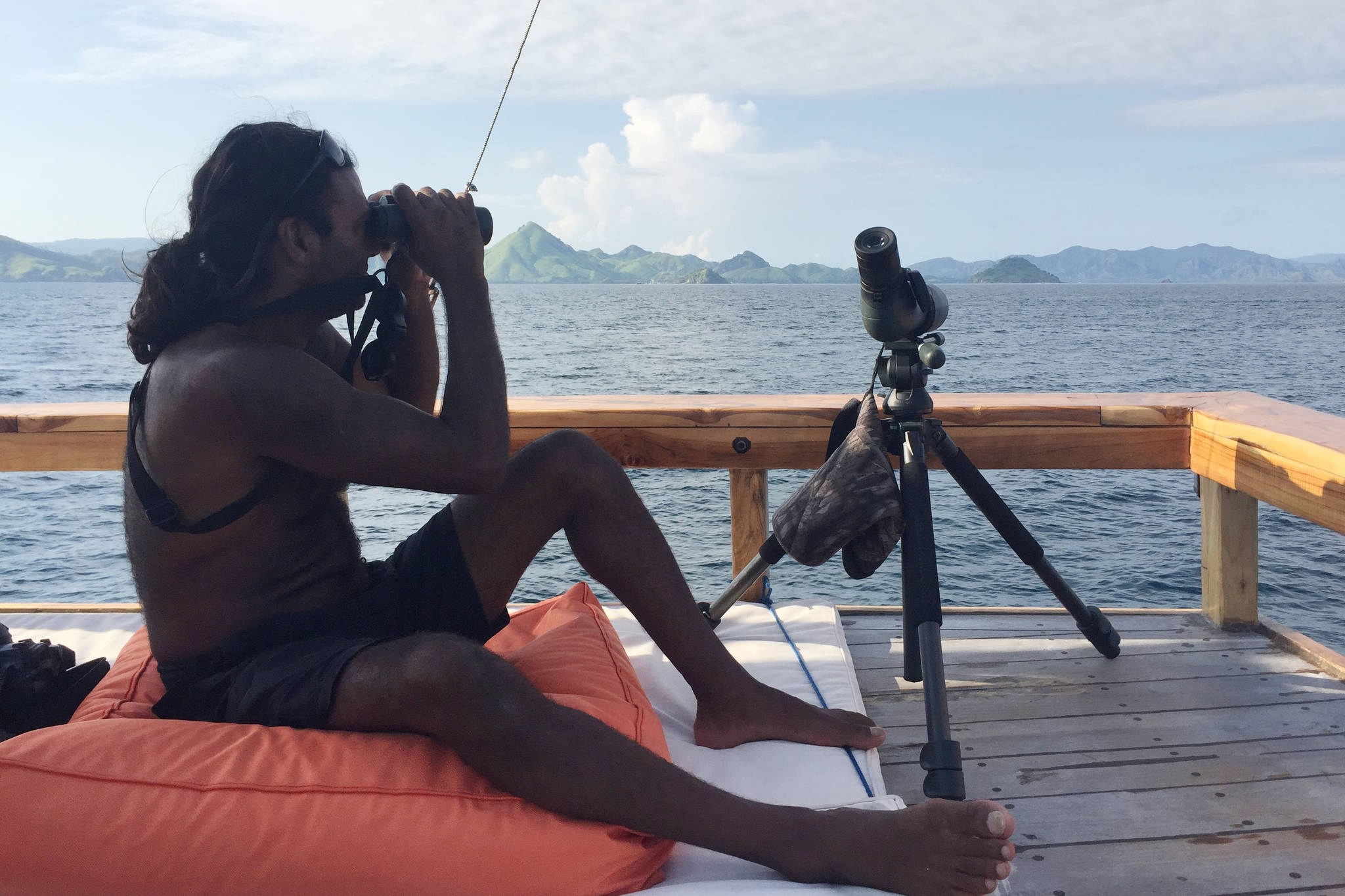Dr. Sanjay Pyare could only learn so much about the Aleutian tern on this side of the Pacific Ocean, so he traveled.
By fitting tracking devices on the migratory seabird in the Yakutat area, the University of Alaska Southeast biologist and other scientists discovered the bird’s fall, winter and spring home: Indonesia. This revelation was the basis of Pyare’s five-month exchange to Indonesia last winter with the Fulbright Scholar Program, a trip he shared during a Juneau Audubon Society talk last last Thursday in the UAS Egan Libary building.
“We don’t really know what that part of the world means in terms of migratory birds,” Pyare said in the one-hour talk.
Rather than learning more scientific facts about the bird, which has been in decline in Alaska for over five decades, the exchange was about leaning into the role communication has is in conservation efforts.
“I can always send maps and do the science and do those types of things remotely and talk about the research part, but this was a rare opportunity to engage some people on the ground there,” Pyare said in an interview this week.
He said that the birds choose to spend nine months in that part of the world is significant.
Pyare said there’s a link between healthy estuaries these birds frequent and socioeconomic value. He made this point in several coastal conservation planning workshops he led.
“We kind of devoted this workshop to this bigger issue of thinking about birds and what they really mean to this whole system,” Pyare said.
There’s approximately 10,000 to 15,000 Aleutian terns that frequent Alaska, according to Pyare. The largest colonies are found on the Copper River delta near Cordova and anywhere between 800-1,500 that show up near Yakutat. After nesting in Alaska, they fly across the Pacific in less than two-weeks time before eventually descending on the Indonesian islands.
A portion of the visiting scientist’s outreach took place at Udayana University in the Bali province. But Pyare also traveled to other provinces to scout out the terns.
In the process of getting to these remote habitats, Pyare came into contact with people of all stripes — taxi drivers, boat captains and more. The level of interest in the birds by those he encountered was refreshing, and also a wake-up call to how he previously addressed conservation.
“This conservation perspective we have in the West, it’s like it has to be dire, everything has to be threatened before we can actually justify looking at it or going after it, and it doesn’t have to be that way,” Pyare said. “That was the epiphany point, that alone, which is kind of not that deep of a thought. But I realized we’ve been focusing all this research and money and effort on this, but there’s maybe another way to help the bird and to do good.”
• Contact sports reporter Nolin Ainsworth at 523-2272 or nainsworth@juneauempire.com.

